Balkinization
an unanticipated consequence of
Jack M. Balkin
Balkinization Symposiums: A Continuing List
E-mail:
Jack Balkin:
jackbalkin at yahoo.com
Bruce Ackerman
bruce.ackerman at yale.edu
Ian Ayres
ian.ayres at yale.edu
Corey Brettschneider
corey_brettschneider at brown.edu
Mary Dudziak
mary.l.dudziak at emory.edu
Joey Fishkin
joey.fishkin at gmail.com
Heather Gerken heather.gerken at yale.edu
Abbe Gluck abbe.gluck at yale.edu
Mark Graber
mgraber at law.umaryland.edu
Stephen Griffin
sgriffin at tulane.edu
Jonathan Hafetz
jonathan.hafetz at shu.edu
Jeremy Kessler
jkessler at law.columbia.edu
Andrew Koppelman
akoppelman at law.northwestern.edu
Marty Lederman
msl46 at law.georgetown.edu
Sanford Levinson
slevinson at law.utexas.edu
David Luban
david.luban at gmail.com
Gerard Magliocca
gmaglioc at iupui.edu
Jason Mazzone
mazzonej at illinois.edu
Linda McClain
lmcclain at bu.edu
John Mikhail
mikhail at law.georgetown.edu
Frank Pasquale
pasquale.frank at gmail.com
Nate Persily
npersily at gmail.com
Michael Stokes Paulsen
michaelstokespaulsen at gmail.com
Deborah Pearlstein
dpearlst at yu.edu
Rick Pildes
rick.pildes at nyu.edu
David Pozen
dpozen at law.columbia.edu
Richard Primus
raprimus at umich.edu
K. Sabeel Rahmansabeel.rahman at brooklaw.edu
Alice Ristroph
alice.ristroph at shu.edu
Neil Siegel
siegel at law.duke.edu
David Super
david.super at law.georgetown.edu
Brian Tamanaha
btamanaha at wulaw.wustl.edu
Nelson Tebbe
nelson.tebbe at brooklaw.edu
Mark Tushnet
mtushnet at law.harvard.edu
Adam Winkler
winkler at ucla.edu
Compendium of posts on Hobby Lobby and related cases
The Anti-Torture Memos: Balkinization Posts on Torture, Interrogation, Detention, War Powers, and OLC
The Anti-Torture Memos (arranged by topic)
Recent Posts
Disturbing reversal of hate-crime convictions in Amish hair-cutting case
Just A Few Blogs
ACS Blog
Alas, a Blog
Althouse
Arts and Letters Daily
Atrios (Eschaton)
Bill of Health
Buzzflash.com
Buzz Machine
Cato at Liberty
Juan Cole (Informed Comment)
Concurring Opinions
The Constitution in 2020
Corrente
Crooked Timber
Daily Howler
Daily Kos
Dana Boyd
Brad DeLong
Digby (Hullabaloo)
Discriminations
Daniel Drezner
Kevin Drum (Mother Jones)
Electrolite
En Banc
Eunomia (Daniel Larison)
Fafblog
Michael Froomkin (Discourse.net)
GovLab (Beth Noveck)
Rick Hasen (Election Law)
History News Network
How Appealing
Ignatz (Sam Heldman)
The Importance of (Ernie Miller)
Infolaw
Instapundit
International Economic Law and Policy Blog
IntLawGrrls
Jacob Levy
Jesus' General
Jurisdynamics
The Kitchen Cabinet
Mark Kleiman
Law Blog Central
Larry Lessig
Lawyers, Guns and Money
Liberal Oasis
Brian Leiter's Law School Reports
The Leiter Reports
Marginal Revolution
Megan McArdle
Memeorandum
Metafilter
Mirror of Justice
The New Republic
Newseum
No More Mister Nice Blog
Brendan Nyhan
Opinio Juris
Orcinus
The Originalism Blog
Pandagon
Passport (Foreign Policy)
Overcoming Bias
Political Animal (Washington Monthly)
Political Theory Daily Review
Political Wire (Taegan Goddard)
The Poor Man
Virginia Postrel
Prawfsblawg
Public Reason
Jonathan Rauch
Raw Story
Redstate
ReligiousLeftLaw.com
Reporters Committee For Freedom of the Press
Reproductive Rights Blog
Rothman's Roadmap to the Right of Publicity
SCOTUS Blog
Seeing the Forest
Clay Shirky
The Shifted Librarian
The Situationist
Larry Solum (Legal Theory)
Andrew Sullivan
Talking Points Memo
Talk Left
Tapped
Tbogg
TechPresident
The Paper Chase (Jurist)
Tom Paine
Tom Tomorrow (This Modern World)
Eve Tushnet
Uggabugga
University of Chicago Law School Faculty Blog
Unqualified Offerings
The Volokh Conspiracy
War and Piece (Laura Rozen)
Wampum
Oliver Willis
Wonkette
Written Description
Matthew Yglesias
Yin
Your Choice of Feeds
1. XML
powered by
2. Atom Feed
3. RSS 2.0
Disturbing reversal of hate-crime convictions in Amish hair-cutting case
Marty Lederman
Yesterday a divided panel of the U.S. Court of Appeals for the Sixth Circuit overturned the convictions of 16 members of the Bergholz Old Order Amish community in Ohio under the 2009 federal hate-crimes law, even though it was undisputed that over a three-month period in 2011, the assailants--under the direction and approval of the Bishop of the Bergholz community, Samuel Mullett--attacked nine other Amish individuals by forcibly slicing off the men’s beards and cutting the women’s hair. A critical part of the majority's decision is based upon its conclusion that the evidence did not necessarily prove that the victims' religion was a but-for cause of the assaults. That conclusion strikes me as untenable--indeed, deeply disturbing in its implications. I'm curious whether others have a similar reaction.
That the assaults in question all occurred over a short period, to these particular nine individual victims, and in this particular manner, was no coincidence: They came in the wake of a profound rift within this particular Amish community. Mullett had excommunicated several church members for challenging his leadership. As the court notes, the general rule within the Old Order Amish religion is that if a community excommunicates a community member, all other Old Order communities also must excommunicate him until he obtains forgiveness from the community that first shunned him. Several of the excommunicated members of the Bergholz community, however, sought admission in other Amish communities without obtaining permission from Mullett, claiming that this was an unusual case in that Mullett had acted improperly. This precipitated a very unusual national crisis within the order, and 300 Amish bishops from all over the country convened in September 2006 to address the issue. Those 300 bishops voted unanimously to reverse the Bergholz excommunications.
Mullett was angry, to say the least, about this turn of events, in which he was so thoroughly rebuked by the entirety of the national church. The series of assaults then followed, under Mullett's direction. The victims were all Amish individuals who were apostates in Mullett's view: some had been excommunicated from the Bergholz community, others had left because of the excommunications, and still others had helped those Bergholz-shunned Amish by reversing their excommunications or by helping them leave Bergholz. And the assaults all took the same form: forcibly cutting the victims' beards and hair. As the court notes, Amish men do not trim their beards, and Amish women do not cut their hair, "as a way of symbolizing their piety, demonstrating righteousness and conveying an Amish identity."
The 16 defendants were convicted under 18 U.S.C. § 249(a)(2)(A), which makes it unlawful to willfully caus[e] bodily injury to any person . . . because of the actual or perceived . . . religion . . . of [that] person.” The trial court instructed the jury that the government could satisfy the mens rea element--that the defendants caused bodily injury "because of" the victims' religion--by showing that “a person’s actual or perceived religion was a significant motivating factor for a [d]efendant’s action,” “even if he or she had other reasons for doing what he or she did as well.”
The court of appeals holds that this instruction was improper--that, in fact, the government must prove that the victim's religion was a "but-for" cause (not merely a significant motivating factor) of the defendant's violent assault. I haven't studied this statutory question carefully, but for purposes of this post I'll assume that the court's legal conclusion is correct and that the jury instruction was improper: At a minimum, Judge Sutton's majority opinion makes a strong case for it, and all three judges on the panel agreed to that extent.
The government argued, however, that any such error in the instructions was harmless, because the evidence was uncontroverted that the victims' religion was a but-for cause of the assaults. That's where the panel splits. The dissenting judge agrees with the government that the evidence of "but-for" causation was undisputed; but the two judges in the majority hold otherwise.
It turns out that, as to each of the four discrete instances that were the basis of the convictions, the particular members of the Begrholz community who engaged in the assaults also testified that they had other reasons--such as commonplace disputes and resentments that occur among family members of all religions--for being angered toward their victims, and that these nonreligious reasons were what precipitated them to assault the victims. The majority of the court of appeals concludes that a properly instructed jury might have found that these nonreligious reasons were the but-for causes of the assaults--that the assaults might have occurred regardless of the victims' religion--and therefore remands the case for a possible retrial.
Based solely on the undisputed facts described in Judge Sutton's opinion, this reasoning strikes me as deeply counterintuitive. For one thing, it appears to be clear that at least some of the victims--those who were excommunicated or who left voluntarily, at a minimum--would not have assaulted but for the fact that Mullett viewed them as heretical. (Mullet said that beard and hair cuttings would stop people from being “Amish hypocrites.”) And that's true even if the particular assailants were motivated in the first instance by other factors, such as interfamilial disputes or anger about nonreligious actions of the victims. As I understand it, the undisputed evidence shows that the assailants conformed strictly to Mullett's direction; and presumably he would not have allowed, let alone encouraged, them to assault their victims had the victims remained members in good standing within the Bergholz religious community.
But even putting that aside, the idea that the victims' religion might not have been a but-for cause of these assaults is open to serious question. Let's assume, for the sake of argument, that the assailants might have assaulted their victims regardless of their religion--that is to say, that they would have assaulted them even if the families had been Episcopal, or athiest, or members of an Old Order Amish community that had not suffered the rifts that occurred in Bergholz.
Even so, isn't it plain beyond any doubt that the victims' religion was a but-for cause of the type of bodily injury that occurred here--the cutting of beards and hair? The assailants obviously chose to use that very unusual form of assault because the hair and beards were of deep religious significance to the victims--indeed, to strike at a fundamental component of their religious identity, by deliberately imparting a tangible, humiliating public sign that the victims were religious outcasts.
The majority doesn't dispute this: It acknowledges that if the victims had been any religion other than Old Order Amish, the assaults, if they occurred at all, would not have involved hair- and beard-cutting. Even so, the two judges in the majority appear to be of the view that that doesn't matter, since the assailants might have had nonreligious reasons--"motives"--to assault their victims. Here is the extraordinary hypothetical analogy that the majority offers to demonstrate its point:
[G]iven that this is the Matthew Shepard Act, imagine that a child tells his parents he is gay. As a result of their faith, the parents ask the child to undergo reparative therapy. The child resists, the parents dig in, all three fight verbally about everything from faith to family obligations. At some point, the child snaps. He assaults the parents and does so in a faith-offensive way—by physically forcing them to eat non-kosher food, by tattooing 666 on their arms or by taking some other action that deeply offends their faith. No doubt faith entered the mix from both sides of the assault, but there is doubt about whether the parents’ faith broke the camel’s back in terms of why the child committed the assault. That the means of assault involved religious symbolism confirms only that he knew how best to hurt his parents. It does not seal the deal that his parents’ faith, as opposed to their lack of support for him, was a but-for motive of the assault.
In other words, the majority is of the view that where someone decides to assault someone else for nonreligious reasons--where, in the majority's words, a nonreligious ground was the motive for the assault--but specifically chooses to physically force the victims to violate their religious precepts as a way of hurting them in a fundamental way that a mere ordinary assault could not, the victims' religion is not a "but-for" cause of the bodily injury.
That the court chose to use the "forcing them to eat non-kosher food [or] tattooing 666 on their arms" hypothetical to demonstrate its point is, I think, chilling. More to the legal point, can this possibly be a proper reflection of congressional intent? I doubt it (and the majority doesn't offer any statutory analysis on this score). Indeed, it would be remarkable if the federal hate-crimes law did not cover such a case. After all, and as the court of appeals notes, the Supreme Court has explained that a government can "punish 'bias-inspired conduct' without offending the First Amendment because bigoted conduct 'inflict[s] greater individual and societal harm'" (quoting Wisconsin v. Mitchell). In the Amish case--and in the court's hypothetical--the assailant's deliberate choice to physically force the victims to violate their religion, and to do so in a way that is designed to leave a conspicuous public sign of their religious transgression, obviously inflicts much greater "individual and societal harm" than if the assailant had chosen merely to, say, strike the victim in the face, as in an ordinary assault. And that is so regardless of whether the fact of the assault was motivated by the victim's religion. The victim's religion plainly is a "but-for" cause of the way in which the "bodily injury" was inflicted, and the but-for cause of the special and distinctly acute harm in such cases that distinguishes them from ordinary assaults.
Allow me a hypo of my own: Assume an employer who has a strict no-tardiness rule--employees must always be at work on time. Whenever any employee violates the rule, the employer chooses a sanction specially designed to punish and to change that particular employee's behavior. One employee is habitually late. There is no question at all that the employer chooses to punish her because of her tardiness, just as he has punished every other employee who has broken the rule. This particular employee is an observant Jew, and so the employer -- in order to effectively deter her from being tardy again -- sanctions her by requiring that she eat pork and shrimp for lunch in the company cafeteria every day for a week. Has the employer thereby violated Title VII, which forbids discrimination "against any individual with respect to his compensation, terms, conditions, or privileges of employment, because of such individual's . . . religion"? Would the employer have a defense if he could show that it was the employee's tardiness, not her Judaism, that prompted him to sanction her--i.e., that she would have been penalized in one way or another regardless of her religion?
I hope the answers to these questions are self-evident . . . but under the rationale of the Sixth Circuit majority, they wouldn't be.
Perhaps the majority chose to reverse the convictions on this ground because it wished to avoid the important constitutional question that the case had raised--namely, whether Congress had the power under the Commerce Clause to proscribe the discriminatory assaults under the facts of this case. [Disclosure: This is a question on which I opined while I was at the Department of Justice.] But, if so, this was hardly the ideal way of avoiding that question--and, in any event, that constitutional question will be raised anew if, as is likely, the defendants are retried.
Posted
6:36 AM
by Marty Lederman [link]
Books by Balkinization Bloggers

Linda C. McClain and Aziza Ahmed, The Routledge Companion to Gender and COVID-19 (Routledge, 2024)

David Pozen, The Constitution of the War on Drugs (Oxford University Press, 2024)

Jack M. Balkin, Memory and Authority: The Uses of History in Constitutional Interpretation (Yale University Press, 2024)
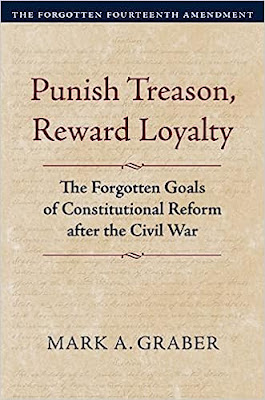
Mark A. Graber, Punish Treason, Reward Loyalty: The Forgotten Goals of Constitutional Reform after the Civil War (University of Kansas Press, 2023)
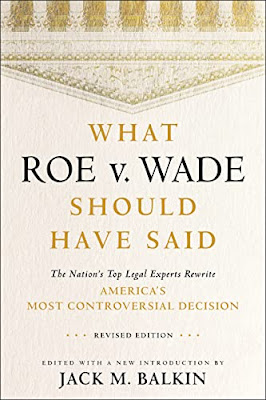
Jack M. Balkin, What Roe v. Wade Should Have Said: The Nation's Top Legal Experts Rewrite America's Most Controversial Decision - Revised Edition (NYU Press, 2023)

Andrew Koppelman, Burning Down the House: How Libertarian Philosophy Was Corrupted by Delusion and Greed (St. Martin’s Press, 2022)

Gerard N. Magliocca, Washington's Heir: The Life of Justice Bushrod Washington (Oxford University Press, 2022)
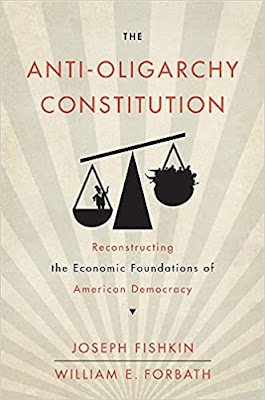
Joseph Fishkin and William E. Forbath, The Anti-Oligarchy Constitution: Reconstructing the Economic Foundations of American Democracy (Harvard University Press, 2022)
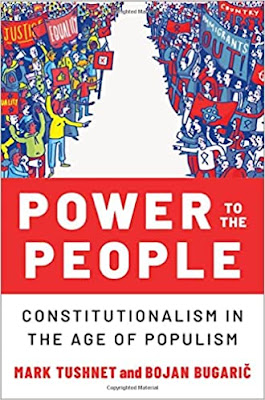
Mark Tushnet and Bojan Bugaric, Power to the People: Constitutionalism in the Age of Populism (Oxford University Press 2021).

Mark Philip Bradley and Mary L. Dudziak, eds., Making the Forever War: Marilyn B. Young on the Culture and Politics of American Militarism Culture and Politics in the Cold War and Beyond (University of Massachusetts Press, 2021).

Jack M. Balkin, What Obergefell v. Hodges Should Have Said: The Nation's Top Legal Experts Rewrite America's Same-Sex Marriage Decision (Yale University Press, 2020)

Frank Pasquale, New Laws of Robotics: Defending Human Expertise in the Age of AI (Belknap Press, 2020)

Jack M. Balkin, The Cycles of Constitutional Time (Oxford University Press, 2020)

Mark Tushnet, Taking Back the Constitution: Activist Judges and the Next Age of American Law (Yale University Press 2020).

Andrew Koppelman, Gay Rights vs. Religious Liberty?: The Unnecessary Conflict (Oxford University Press, 2020)

Ezekiel J Emanuel and Abbe R. Gluck, The Trillion Dollar Revolution: How the Affordable Care Act Transformed Politics, Law, and Health Care in America (PublicAffairs, 2020)

Linda C. McClain, Who's the Bigot?: Learning from Conflicts over Marriage and Civil Rights Law (Oxford University Press, 2020)
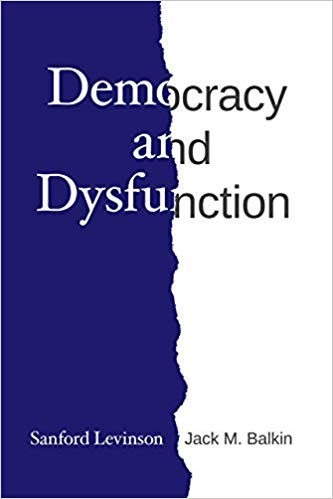
Sanford Levinson and Jack M. Balkin, Democracy and Dysfunction (University of Chicago Press, 2019)

Sanford Levinson, Written in Stone: Public Monuments in Changing Societies (Duke University Press 2018)

Mark A. Graber, Sanford Levinson, and Mark Tushnet, eds., Constitutional Democracy in Crisis? (Oxford University Press 2018)

Gerard Magliocca, The Heart of the Constitution: How the Bill of Rights became the Bill of Rights (Oxford University Press, 2018)

Cynthia Levinson and Sanford Levinson, Fault Lines in the Constitution: The Framers, Their Fights, and the Flaws that Affect Us Today (Peachtree Publishers, 2017)

Brian Z. Tamanaha, A Realistic Theory of Law (Cambridge University Press 2017)

Sanford Levinson, Nullification and Secession in Modern Constitutional Thought (University Press of Kansas 2016)

Sanford Levinson, An Argument Open to All: Reading The Federalist in the 21st Century (Yale University Press 2015)

Stephen M. Griffin, Broken Trust: Dysfunctional Government and Constitutional Reform (University Press of Kansas, 2015)

Frank Pasquale, The Black Box Society: The Secret Algorithms That Control Money and Information (Harvard University Press, 2015)

Bruce Ackerman, We the People, Volume 3: The Civil Rights Revolution (Harvard University Press, 2014)
Balkinization Symposium on We the People, Volume 3: The Civil Rights Revolution

Joseph Fishkin, Bottlenecks: A New Theory of Equal Opportunity (Oxford University Press, 2014)

Mark A. Graber, A New Introduction to American Constitutionalism (Oxford University Press, 2013)

John Mikhail, Elements of Moral Cognition: Rawls' Linguistic Analogy and the Cognitive Science of Moral and Legal Judgment (Cambridge University Press, 2013)

Gerard N. Magliocca, American Founding Son: John Bingham and the Invention of the Fourteenth Amendment (New York University Press, 2013)

Stephen M. Griffin, Long Wars and the Constitution (Harvard University Press, 2013)

Andrew Koppelman, The Tough Luck Constitution and the Assault on Health Care Reform (Oxford University Press, 2013)

James E. Fleming and Linda C. McClain, Ordered Liberty: Rights, Responsibilities, and Virtues (Harvard University Press, 2013)
Balkinization Symposium on Ordered Liberty: Rights, Responsibilities, and Virtues

Andrew Koppelman, Defending American Religious Neutrality (Harvard University Press, 2013)

Brian Z. Tamanaha, Failing Law Schools (University of Chicago Press, 2012)

Sanford Levinson, Framed: America's 51 Constitutions and the Crisis of Governance (Oxford University Press, 2012)

Linda C. McClain and Joanna L. Grossman, Gender Equality: Dimensions of Women's Equal Citizenship (Cambridge University Press, 2012)

Mary Dudziak, War Time: An Idea, Its History, Its Consequences (Oxford University Press, 2012)

Jack M. Balkin, Living Originalism (Harvard University Press, 2011)

Jason Mazzone, Copyfraud and Other Abuses of Intellectual Property Law (Stanford University Press, 2011)

Richard W. Garnett and Andrew Koppelman, First Amendment Stories, (Foundation Press 2011)

Jack M. Balkin, Constitutional Redemption: Political Faith in an Unjust World (Harvard University Press, 2011)

Gerard Magliocca, The Tragedy of William Jennings Bryan: Constitutional Law and the Politics of Backlash (Yale University Press, 2011)

Bernard Harcourt, The Illusion of Free Markets: Punishment and the Myth of Natural Order (Harvard University Press, 2010)

Bruce Ackerman, The Decline and Fall of the American Republic (Harvard University Press, 2010)
Balkinization Symposium on The Decline and Fall of the American Republic

Ian Ayres. Carrots and Sticks: Unlock the Power of Incentives to Get Things Done (Bantam Books, 2010)

Mark Tushnet, Why the Constitution Matters (Yale University Press 2010)
Ian Ayres and Barry Nalebuff: Lifecycle Investing: A New, Safe, and Audacious Way to Improve the Performance of Your Retirement Portfolio (Basic Books, 2010)
.jpg)
Jack M. Balkin, The Laws of Change: I Ching and the Philosophy of Life (2d Edition, Sybil Creek Press 2009)

Brian Z. Tamanaha, Beyond the Formalist-Realist Divide: The Role of Politics in Judging (Princeton University Press 2009)
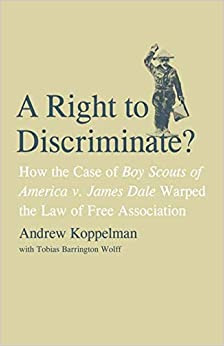
Andrew Koppelman and Tobias Barrington Wolff, A Right to Discriminate?: How the Case of Boy Scouts of America v. James Dale Warped the Law of Free Association (Yale University Press 2009)

Jack M. Balkin and Reva B. Siegel, The Constitution in 2020 (Oxford University Press 2009)
Heather K. Gerken, The Democracy Index: Why Our Election System Is Failing and How to Fix It (Princeton University Press 2009)

Mary Dudziak, Exporting American Dreams: Thurgood Marshall's African Journey (Oxford University Press 2008)

David Luban, Legal Ethics and Human Dignity (Cambridge Univ. Press 2007)

Ian Ayres, Super Crunchers: Why Thinking-By-Numbers is the New Way to be Smart (Bantam 2007)

Jack M. Balkin, James Grimmelmann, Eddan Katz, Nimrod Kozlovski, Shlomit Wagman and Tal Zarsky, eds., Cybercrime: Digital Cops in a Networked Environment (N.Y.U. Press 2007)
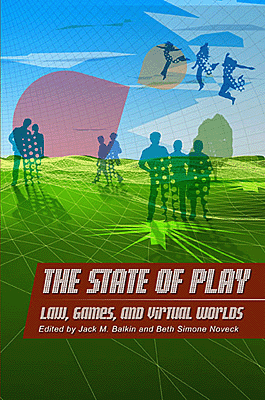
Jack M. Balkin and Beth Simone Noveck, The State of Play: Law, Games, and Virtual Worlds (N.Y.U. Press 2006)

Andrew Koppelman, Same Sex, Different States: When Same-Sex Marriages Cross State Lines (Yale University Press 2006)
Brian Tamanaha, Law as a Means to an End (Cambridge University Press 2006)
Sanford Levinson, Our Undemocratic Constitution (Oxford University Press 2006)
Mark Graber, Dred Scott and the Problem of Constitutional Evil (Cambridge University Press 2006)
Jack M. Balkin, ed., What Roe v. Wade Should Have Said (N.Y.U. Press 2005)
Sanford Levinson, ed., Torture: A Collection (Oxford University Press 2004)
Balkin.com homepage
Bibliography
Conlaw.net
Cultural Software
Writings
Opeds
The Information Society Project
BrownvBoard.com
Useful Links
Syllabi and Exams